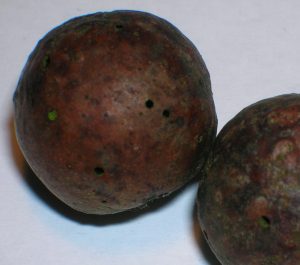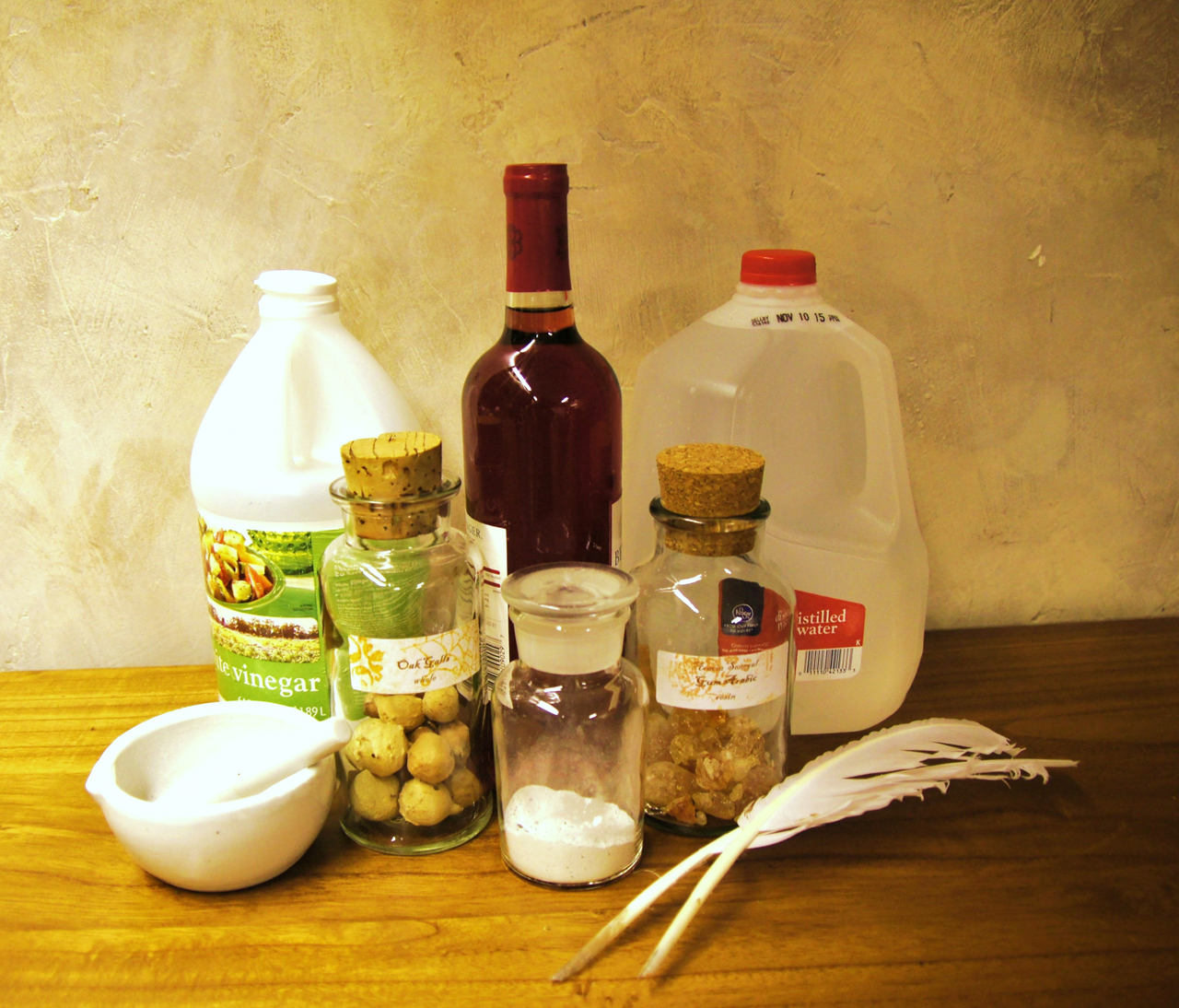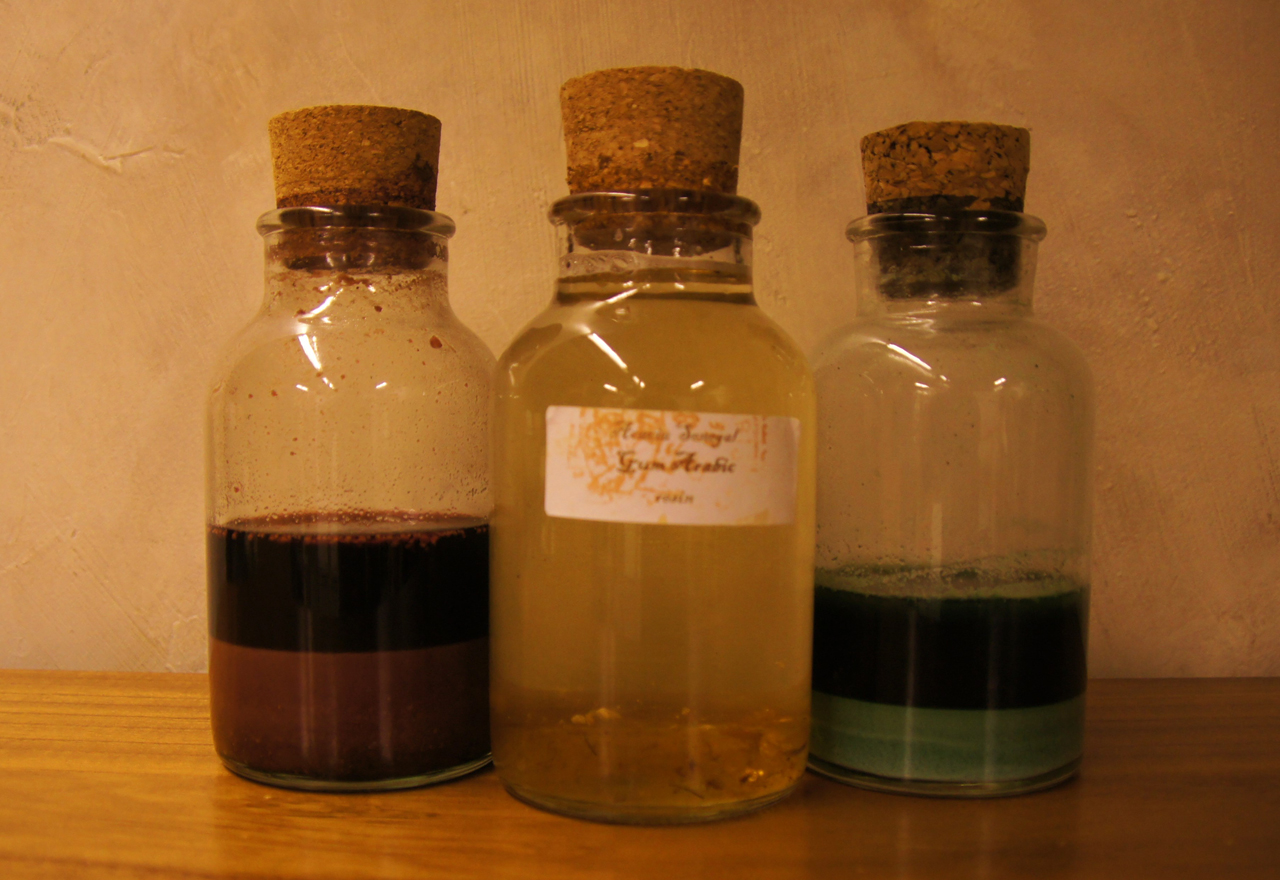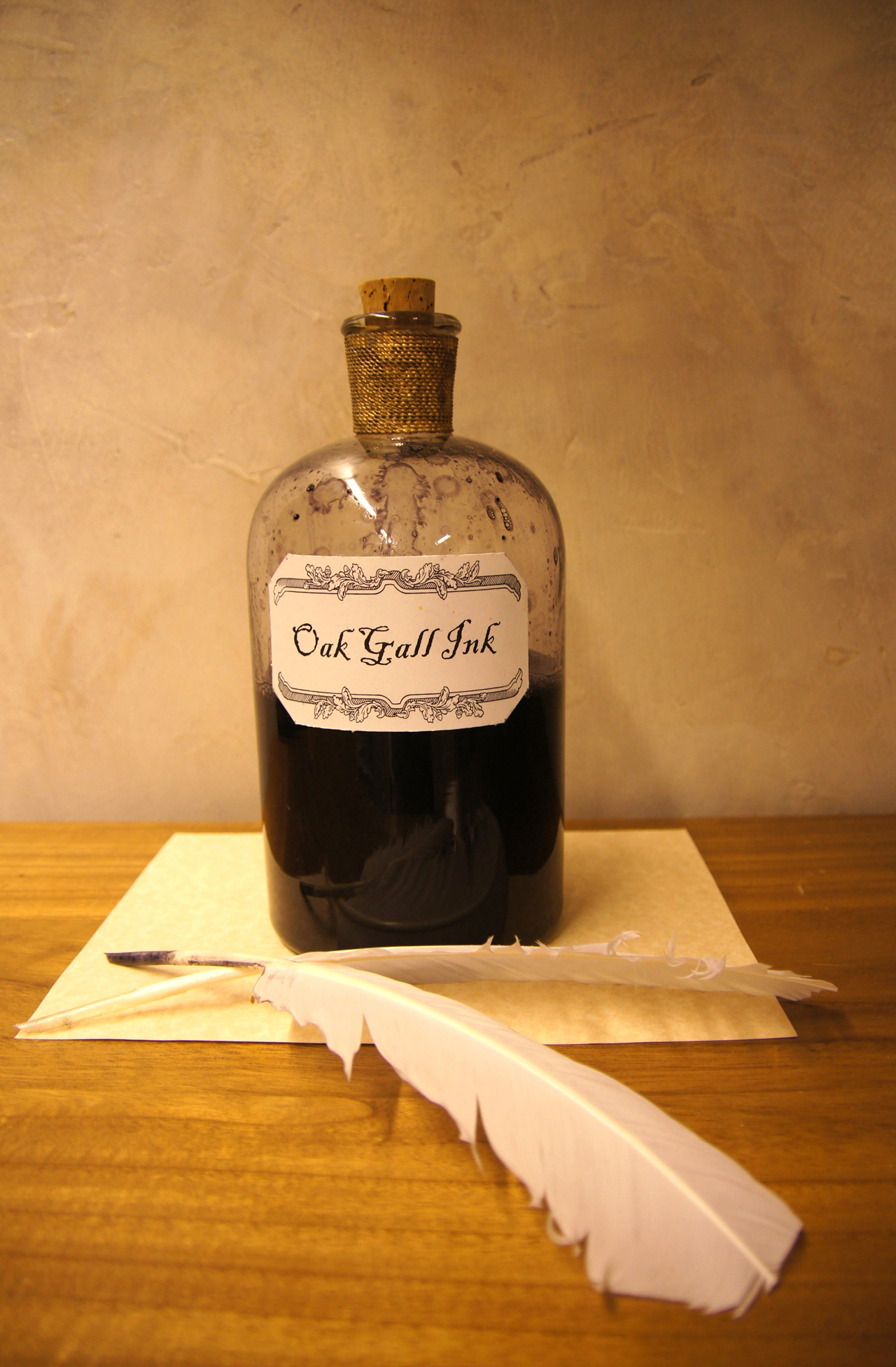Oak Gall Ink
 Have you got that quill pen ready, but are missing some ink? Here we will tell you how to make your own seriously-medieval Oak Gall Ink. You do want the real deal, right?
Have you got that quill pen ready, but are missing some ink? Here we will tell you how to make your own seriously-medieval Oak Gall Ink. You do want the real deal, right?
Oak galls or oak apples, caused by a reaction between certain species of wasp larvae and oak trees, have been used for making ink since at least Roman times and this ink was, at one time, THE ink of the Western world.

Ingredients:
3 oz. Oak Galls
1 oz. ferrous sulfate
6 oz. gum arabic
32 oz. distilled water
8 oz. vinegar
8 oz. wine
coffee filters
rubber gloves
large glass bottles
several funnels
strainers
There are many records from Medieval times that give instructions for making Oak Gall ink but none of them are very exact. The black color of the ink is produced by the reaction of the tannins in the oak galls with the ferrous sulfate.
After reading through many of the recipes we decided on a recipe based on a signature of threes. The recipe has the three solids always required-oak galls, ferrous sulfate and gum arabic. It uses three liquids- distilled water, vinegar and wine. All of the old recipes called for distilled water or rain water. Using distilled water or rainwater will avoid having fluoride and other chemicals in the water. Some of the old recipes called for vinegar or wine. The vinegar and wine are more acidic of course which we thought might help to extract the ingredients.
Then our recipe calls for three steps-preparing the ingredients, straining them, and then combining them.
You may be able to find oak galls by taking a walk in the woods where there are oak trees. They are easiest to spot in the Fall once the trees have shed their leaves. Sometimes squirrels knock them down. Once you spot a few and know what to look for you will begin to notice them more frequently. If you don’t have access to an oak woods you can buy them on line. We purchased our oak galls from John Neal Bookseller. This company is a favorite among calligraphers. The oak galls are curious looking and fun to have if you like to have jars of interesting things sitting around. The ferrous sulfate was once called Copperas because of it’s green tint. I looked up ferrous sulfate on Amazon.com and page after page of iron pills kept coming up. I thought “OK, iron pills it is. I bought them at my local drug store. When you purchase your gum arabic, the chunks, powder or photographer’s liquid resin seem to be a better price than the little bottle sold for use by painters.
To prepare your ingredients you need to break down the dry ingredients and soak them in the liquid you have chosen. We had a hard time pounding up the oak galls so we put them in a spice mill. By the time we had them evenly ground they had been reduced to a powder. We think this made them dissolve more readily. The chunks of gum arabic resin would have dissolved better if we had broken up the chunks a bit more but dissolved well in the end. We found three jars of a good size and decided to dissolve the oak galls in the wine and the ferrous sulfate in the vinegar. We put the gum arabic in the distilled water. Some recipes said to boil the water and that would have helped dissolve the gum arabic resin faster but it had already dissolved by the time we decided to use it. We used 8 ounces of each liquid and added more water to the resin periodically as it seemed to soak up the liquid.

Many of the recipes said to let the ingredients soak for about a week. Ours sat for five or six days by the time we got back to our project and we were pleased by the results. The powdered oak galls released a lot of their tannins because they were so finely ground. The gum arabic resin still needed to be diluted so that is when we added still more water. The ingredients will stain your hands so we recommend wearing rubber gloves.
We put a coffee filter in a strainer over a funnel for the oak galls and ferrous sulfate and filtered the liquids into a second set of bottles. After several hours we removed the coffee filters containing the residues and combined the strained liquids into one large bottle and stirred them to combine. You may need to strain it again after it sits awhile. We tested the newly created ink by writing with a quill pen and it worked very well. The ink was a little light at first but quickly darkened to a solid black color. This color change has been noted by other people who have experimented with making oak gall ink this way.
Store your ink in a glass bottle with a tight stopper.

Date
May 26, 2016
Category
Medieval




No Comments